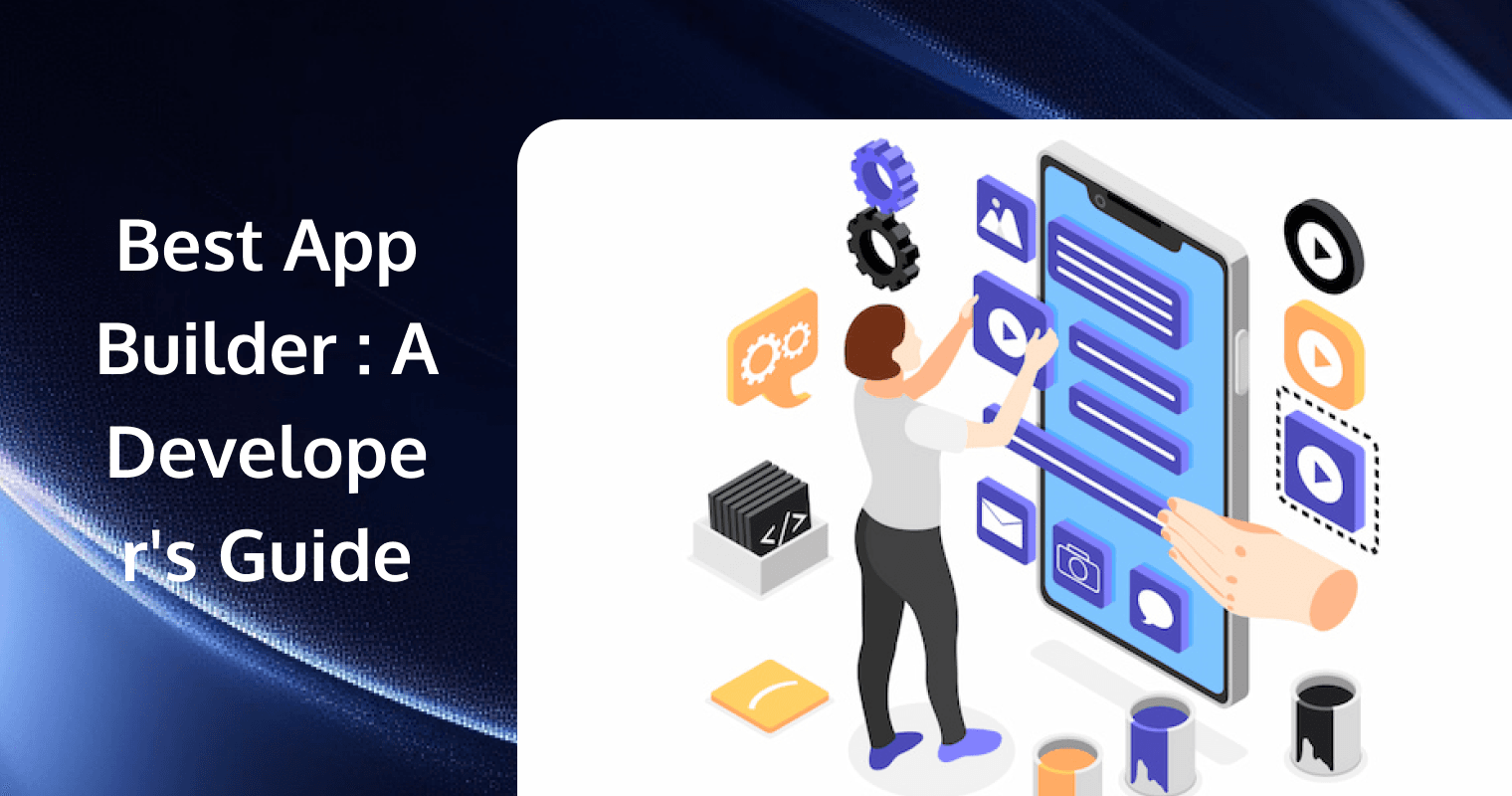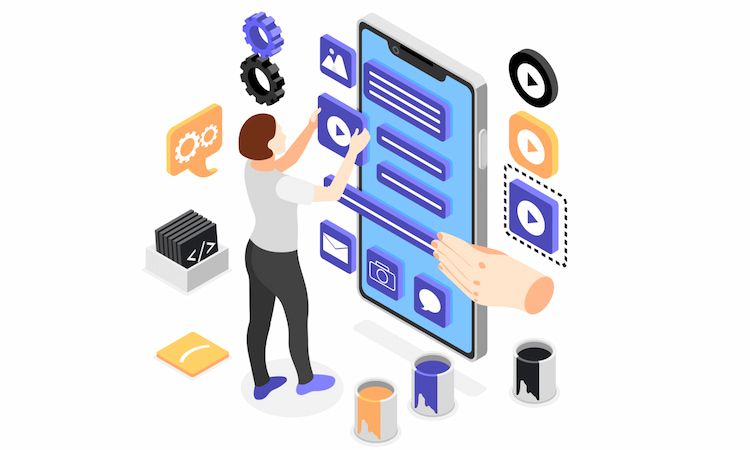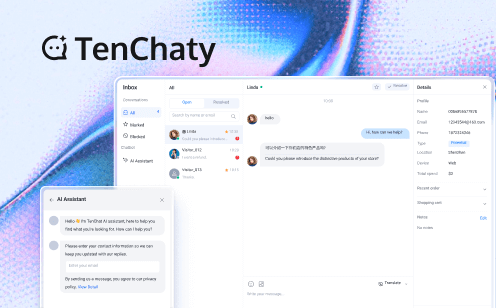
Creating your own app might sound like something only professional developers can do, but that’s no longer the case. Thanks to app builders, you can bring your ideas to life without needing to write a single line of code. Whether you’re starting a small business, growing your brand, or just making something cool, an app builder can help you do it quickly and easily. In this guide, we’ll chat about the benefits of using an app builder, take a look at the top low-code or no-code app builders available in 2025, and give you tips on choosing the right one for your needs.

Benefits of Using an App Builder
An app builder is a user-friendly platform or software that allows you to create mobile or web applications without needing to write complex code. These tools typically come with pre-designed templates, drag-and-drop features, and integrations that make the development process smooth and accessible.
Here are some of the top benefits of using an app builder:
Minimal or No Coding Skills Required
One of the biggest advantages of using an app builder is that you don’t need to know how to code. Most platforms, especially those no-code app builders, offer drag-and-drop features and pre-built templates, so you can design your app exactly the way you want without writing a single line of code.
Cost-Effective Solution
Hiring a development team or learning to code yourself can be expensive and time-consuming. An app builder helps you save money by providing all the tools you need in one place, often for a fraction of the cost of custom development.
Faster Development Time
Traditional app development can take months—or even longer. With an app builder, you can go from idea to launch in a matter of days or weeks, depending on the complexity of your app.
Customization Made Simple
Even though app builders are user-friendly, they don’t compromise on creativity. You can customize layouts, colors, and features to ensure your app stands out and aligns with your vision.
Top 7 App Builders in 2025
If you’re ready to create your app, finding the right app builder is the first step. Here’s a rundown of the top 7 app builders to help you get started:
nandbox
nandbox is a no-code app builder that enables you to create native mobile apps for both iOS and Android. It offers a drag-and-drop interface with over 240 built-in features, including messaging, e-commerce, and booking systems.
Pros:
- Comprehensive feature set suitable for various industries.
- Supports API and system integrations.
- Provides native app performance and user experience.
Cons:
May have a learning curve for beginners due to the abundance of features.
Softr
Softr allows you to build web applications and client portals by connecting to your existing data sources like Airtable or Google Sheets, no code required. It provides pre-built blocks and templates to accelerate development.
Pros:
- Turns your Airtable and Google Sheets into functional web apps.
- User-friendly with drag-and-drop functionality.
- Offers granular permissions and access controls.
Cons:
Primarily focused on web apps; lacks native mobile app support.
Bubble
Bubble is a powerful no-code platform for building complex web applications. It offers full control over the design and functionality, allowing for the creation of interactive and dynamic apps. You can build apps that automatically adjust to different screen sizes and devices and access to a wide range of plugins to extend their functionality.
Pros:
- Highly customizable with a visual programming interface.
- Supports complex logic and workflows.
- Active community and extensive learning resources.
Cons:
Steeper learning curve compared to other no-code platforms.
Adalo
Adalo is a full-fledged no-code app builder, ideal for users looking to create complete apps without programming. You can get started quickly using templates for common app types like e-commerce, social media, booking systems, etc. It also supports adding custom components and API integrations for more advanced functionality.
Pros:
- Intuitive interface suitable for beginners.
- Offers both web and mobile app publishing.
- Includes a variety of pre-built components and templates.
Cons:
Limited scalability for more complex applications.
Appy Pie
Appy Pie is a versatile no-code platform that allows you to create mobile apps, websites, chatbots, and even task automation workflows. It’s designed for businesses and individuals looking to launch their app without breaking the bank. With its AI-powered tools and wide range of features, Appy Pie is a great choice for those new to app development.
Pros:
- Suitable for beginners with no technical experience.
- Affordable pricing with a free tier for basic app building.
- Includes features for diverse industries, from retail to education.
Cons:
Limited design flexibility compared to other platforms.
Glide
Glide is a no-code app builder that transforms your existing data, such as Google Sheets or Excel files, into functional and interactive mobile apps. Its simplicity and speed make it ideal for creating lightweight, data-driven applications. It’s especially useful for professionals who want to automate workflows or create business tools.
Pros:
- Incredibly easy to use, even for complete beginners.
- Real-time updates mean data changes in your source file are instantly reflected in the app.
- Affordable for small projects and businesses.
Cons:
Limited scalability for larger or more complex apps.
Zapier Interfaces
Zapier Interfaces is a no-code tool that allows you to create custom dashboards, forms, and portals connected to Zapier’s powerful automation platform. It’s perfect for automating workflows and building internal tools for businesses. With a drag-and-drop interface and integration with over 6,000 apps, Zapier Interfaces stands out for its focus on productivity and efficiency.
Pros:
- Perfect for automating repetitive tasks and improving team workflows.
- Integrates with an extensive range of third-party apps.
- Intuitive interface with drag-and-drop simplicity.
Cons:
Primarily focused on internal tools; not ideal for creating consumer-facing apps.
What to Look for in an App Builder
Choosing the right app builder is key to bringing your vision to life efficiently and effectively. With so many options available, it’s important to consider a few key factors to ensure the platform meets your needs:
Ease of Use
Look for a platform that matches your technical expertise. If you’re a beginner, a drag-and-drop interface and user-friendly design tools are essential. Advanced users might prefer platforms offering more flexibility and customization options.
Features and Functionality
Identify the features you need for your app. Common features include:
- Push notifications
- Payment gateways
- User authentication
- Analytics
Ensure the app builder supports your specific needs without requiring additional tools or services.
Customization Options
A great app builder allows you to personalize layouts, colors, and designs to reflect your brand. Look for platforms that offer customizable templates and the ability to tweak elements like navigation menus and fonts.
Platform Compatibility
Decide whether you need a mobile app (iOS, Android), a web app, or both. Some app builders specialize in native apps, while others excel in web app creation. Make sure the platform supports the devices and operating systems your audience uses most.
Integration Capabilities
If you’re already using tools like Google Sheets, Slack, or Stripe, check if the app builder integrates seamlessly with them. Strong integration capabilities save time and help you create more robust apps.
Scalability
Consider the growth potential of your app. If you’re planning to add more users, features, or handle larger datasets, choose a platform that can scale with your needs.
Support and Resources
Building an app can involve troubleshooting. Check for resources like tutorials, community forums, and customer support. Platforms with active communities or live chat support can make a big difference when you’re stuck.
How to Build an App with an App Builder
Once you’ve chosen an app builder, creating an app is a straightforward process that empowers you to turn your ideas into reality. Here’s a step-by-step guide to help you get started:
1. Define Your Goals
Start by clarifying why you’re building the app. Ask yourself:
- What problem does it solve?
- Who is your target audience?
- What features will the app need to succeed?
2. Plan Your App’s Features and Layout
Before diving in, sketch a rough layout of your app. Identify key features such as:
- Login/signup pages
- Navigation menus
- Key functionalities (e.g., e-commerce, booking, or forms)
This blueprint will make it easier to organize your work within the app builder.
3. Select a Template or Start from Scratch
Most app builders offer pre-designed templates tailored for different industries like retail, education, or fitness. You can:
- Use a template to save time and customize it to match your branding.
- Start from scratch if you have a unique design in mind.
4. Customize the Design
Make your app visually appealing and aligned with your brand identity by customizing elements such as:
- Colors and Fonts: Match your brand’s theme.
- Logos and Images: Add your own assets to personalize the app.
- Navigation and Layout: Ensure a user-friendly experience.
5. Add Features and Integrations
Enhance your app by including the necessary features. Most app builders allow you to drag and drop components like:
- Contact forms
- Payment gateways
- Push notifications
If your app needs real-time communication, consider integrating TRTC by Tencent Cloud. TRTC provides low-latency, high-quality messaging and audio/video communication services. It’s perfect for:
- Seamless text messaging.
- High-quality, stable voice or video calls with low latency.
- Engaging live streams enhanced with AR beauty filters.
- Interactive virtual classrooms with smooth audio and video transmission.
- Online conferencing.
- Immersive in-game voice chat.
TRTC provides multi-platform APIs, server-side APIs, webhooks, and UIkit components. You can get started with just a few lines of code. Backed by Tencent Cloud, it ensures stable, high-quality communication at a low cost.
6. Test Your App
Before launching, thoroughly test your app to identify and fix any issues. Focus on:
- Functionality: Ensure all features work as intended.
- User Experience: Navigate the app like a user and refine where necessary.
- Performance: Check for speed and compatibility across devices.
7. Submit and Publish Your App
Once you’re satisfied with your app, it’s time to launch!
- For mobile apps, app builders often assist in submitting your app to app stores like Google Play and Apple’s App Store.
- For web apps, publish them using the platform’s hosting services or connect your custom domain.
Conclusion
Building an app doesn’t have to be overwhelming or expensive when you have the right app builder on your side. These tools are designed to help you bring your ideas to life without needing a developer’s expertise. Whether you’re looking to build a simple mobile app, a robust SaaS product, or something in between, app builders like Softr, Bubble, Glide, and others provide the flexibility and features to meet your needs. So why wait? Start exploring your options today and get ready to create something awesome!
FAQs
Can I build my own app for free?
Yes, you can build your own app for free using no-code app builders like Glide and Adalo or free coding resources. However, publishing your app on platforms like the Apple App Store or Google Play may involve some fees.
How much does it cost for someone to build an app?
The cost of building an app can vary widely depending on its complexity, features, and the team you hire. It can cost nothing if built with minimal features using a free app builder. Simple apps might cost between $5,000 to $20,000, while more complex apps with advanced features can range from $50,000 to $200,000 or more.
What is the best program to build an app?
The best program to build an app depends on your needs, skills, and the type of app you want to create.
- For Beginners: Use no-code/low-code platforms like Bubble, Softr, or Adalo.
- For Cross-Platform Apps: Use frameworks like Flutter, React Native, or Xamarin.
- For iOS Apps: Use Xcode with Swift.
- For Android Apps: Use Android Studio with Kotlin or Java.
Are apps hard to build?
Building an app can vary in difficulty depending on its complexity, your experience, and the tools you use. Simple apps with basic features are easier to create, especially with no-code app builders, while complex apps with custom features or advanced functionality may require more time, expertise, and resources.
If you have any questions or need assistance online, our support team is always ready to help. Please feel free to Contact us or join us on Telegram or Discord. For technical problems, you can also get help directly from developers on Stack Overflow.


